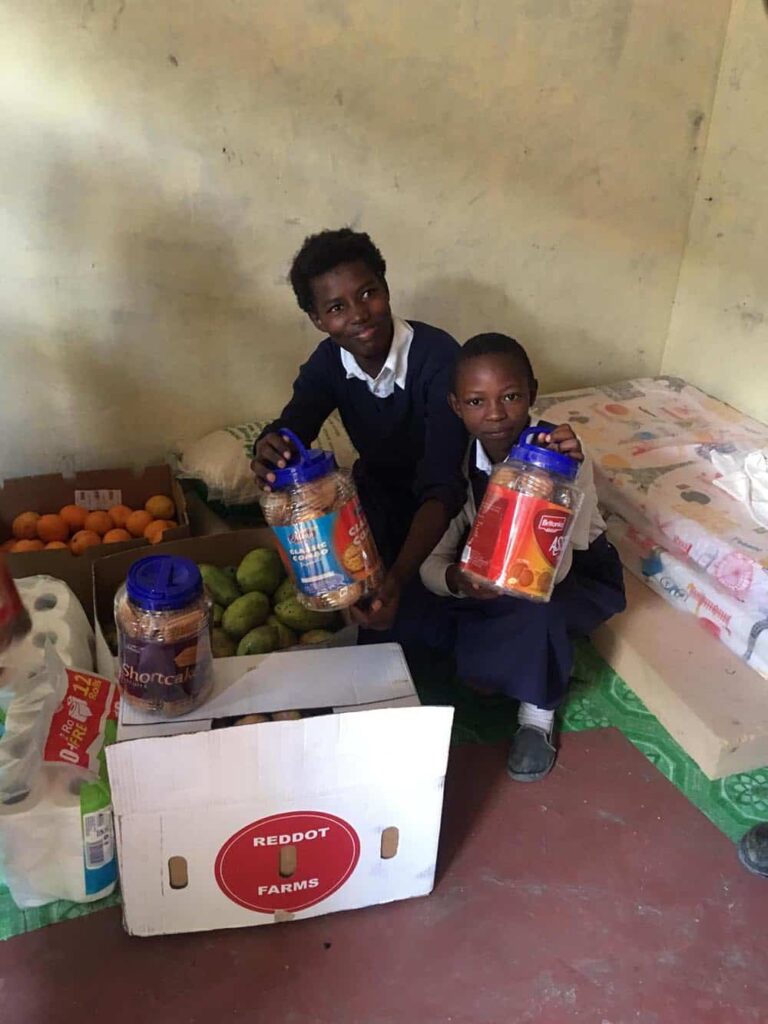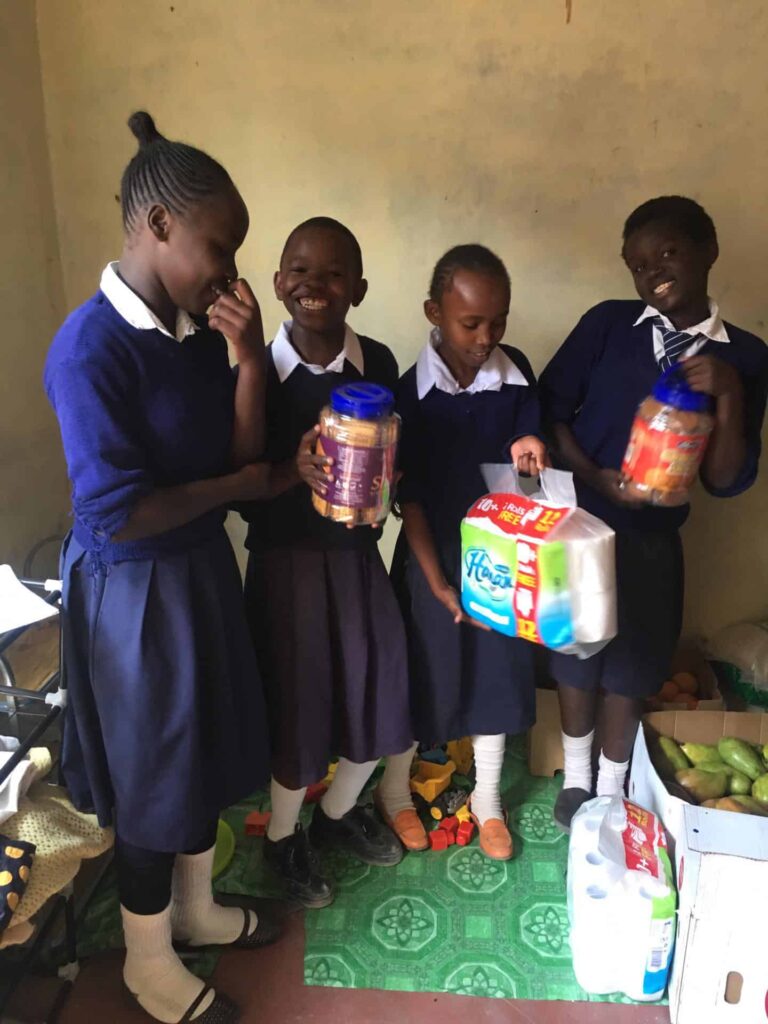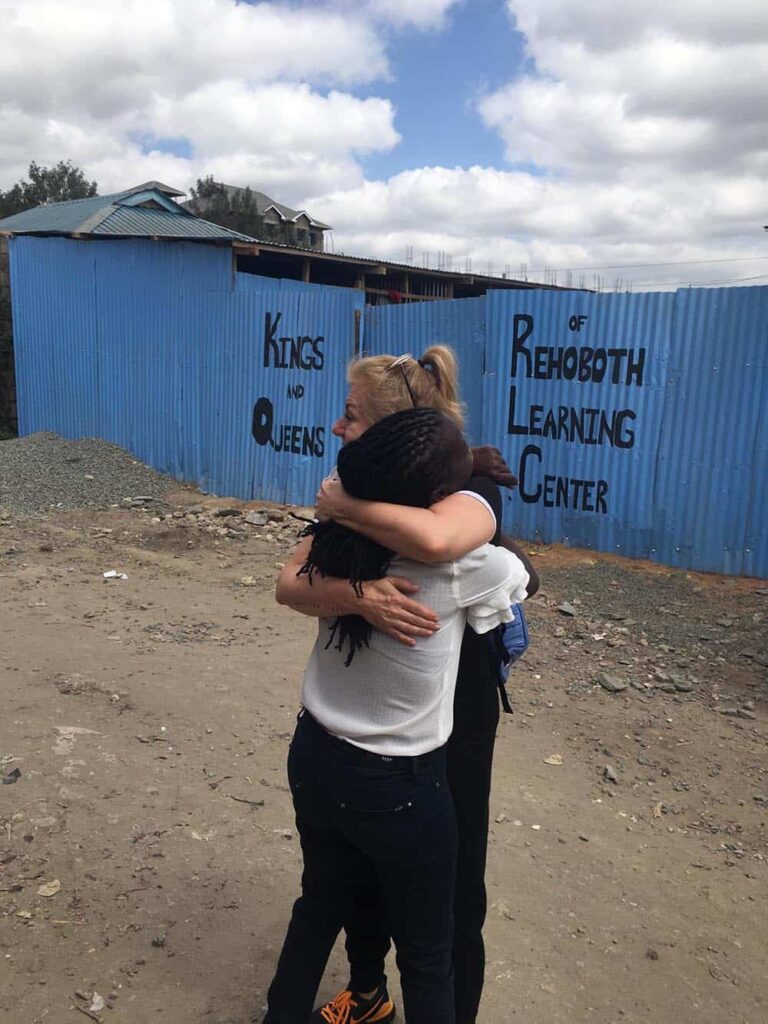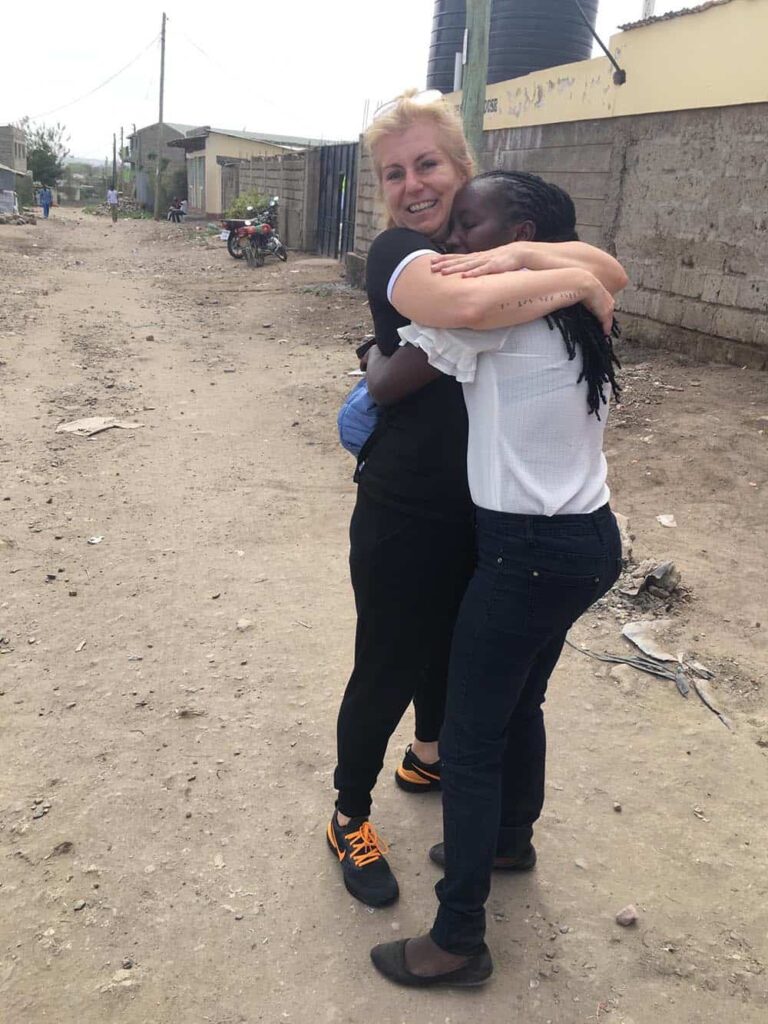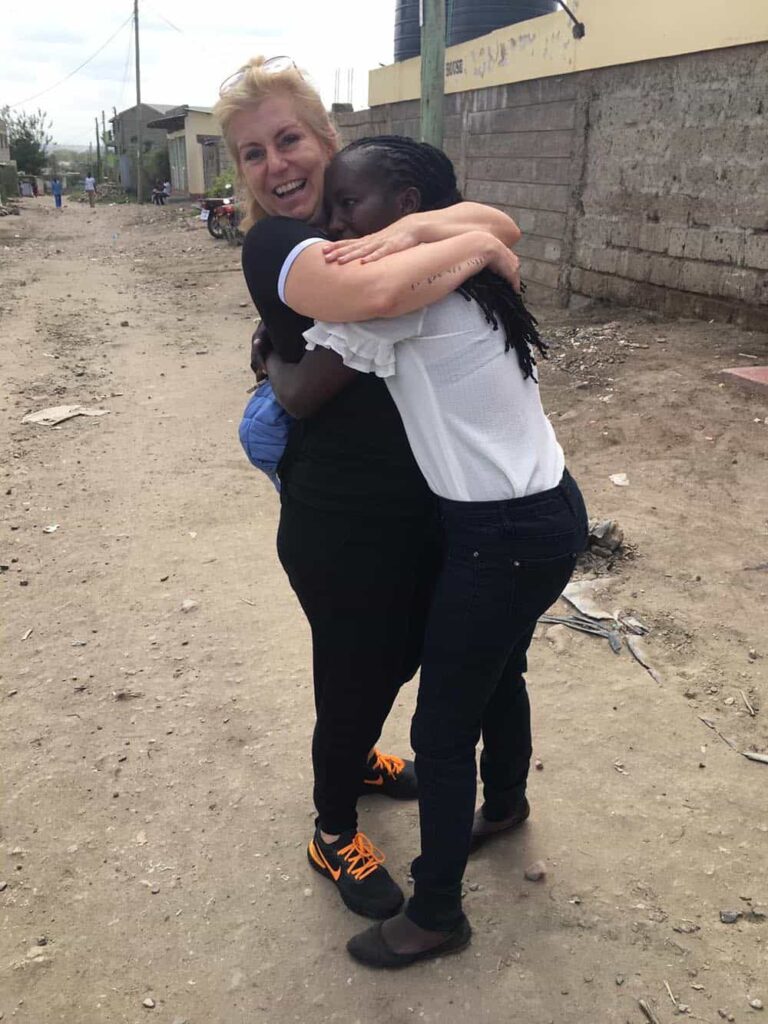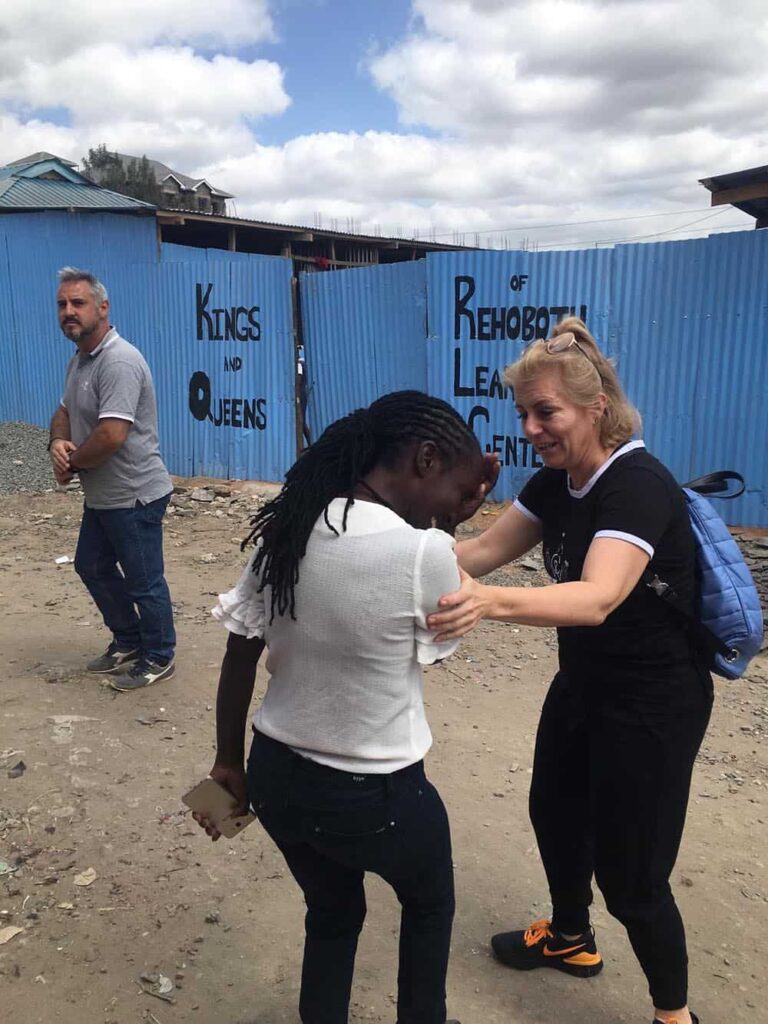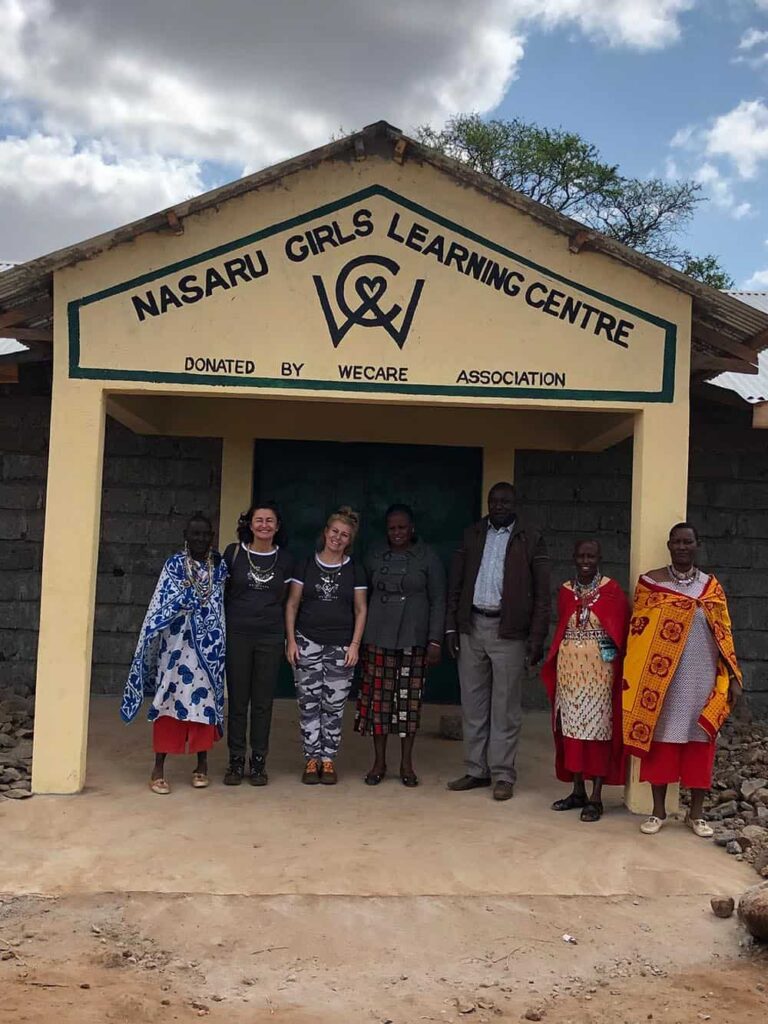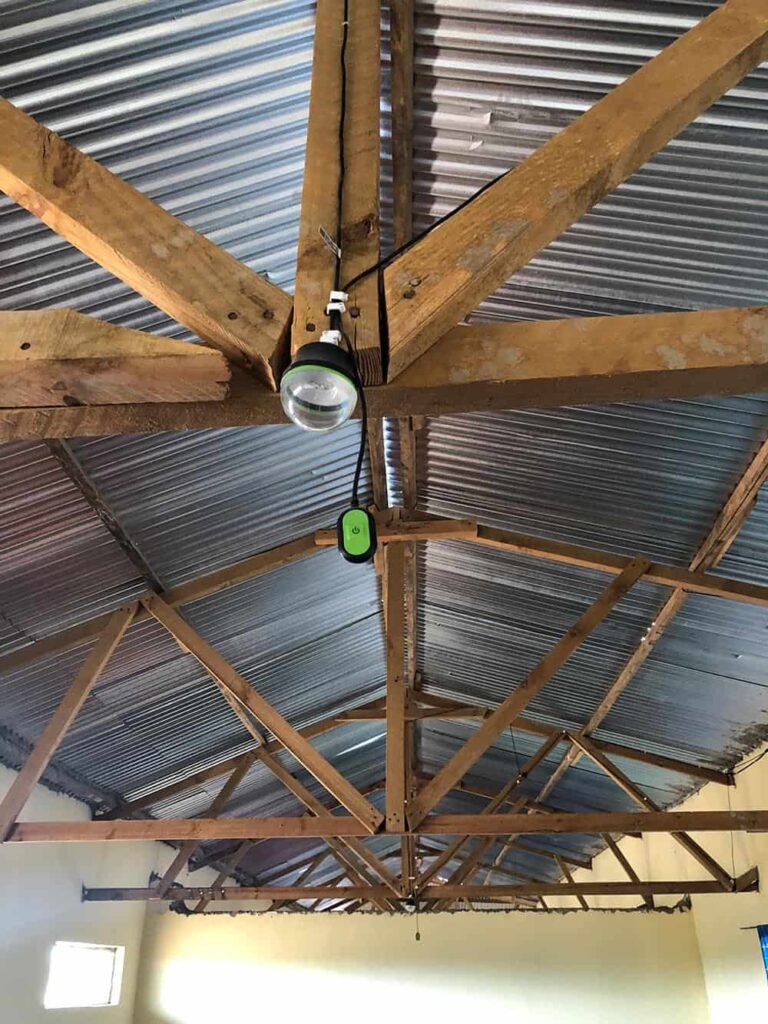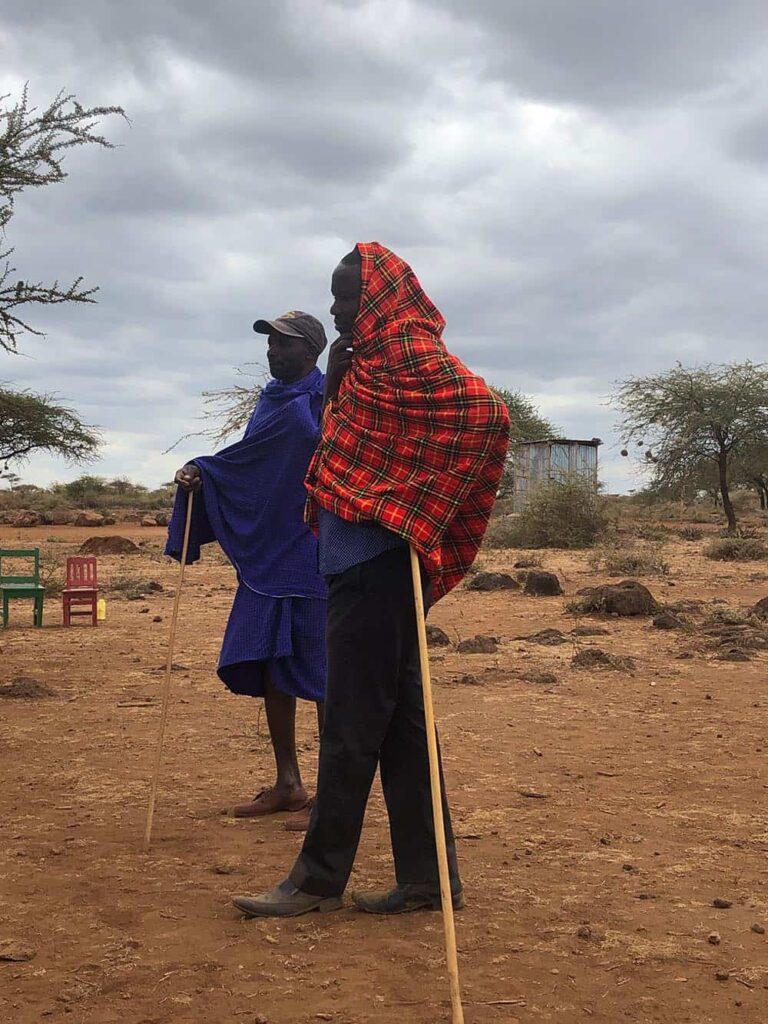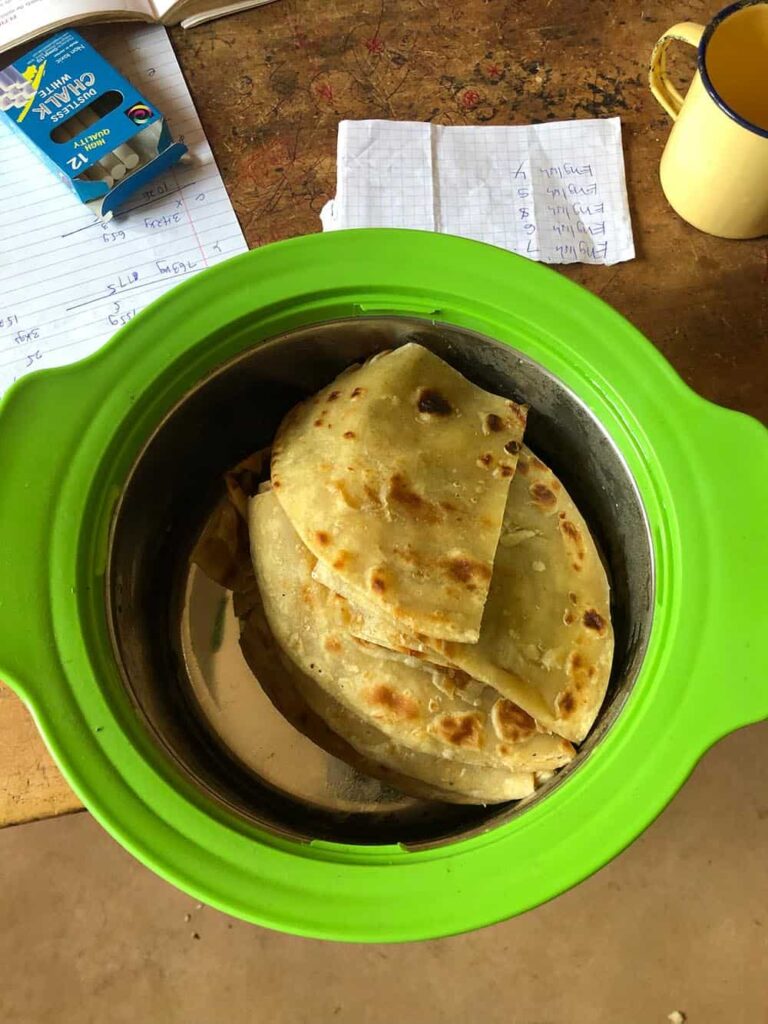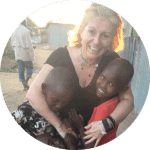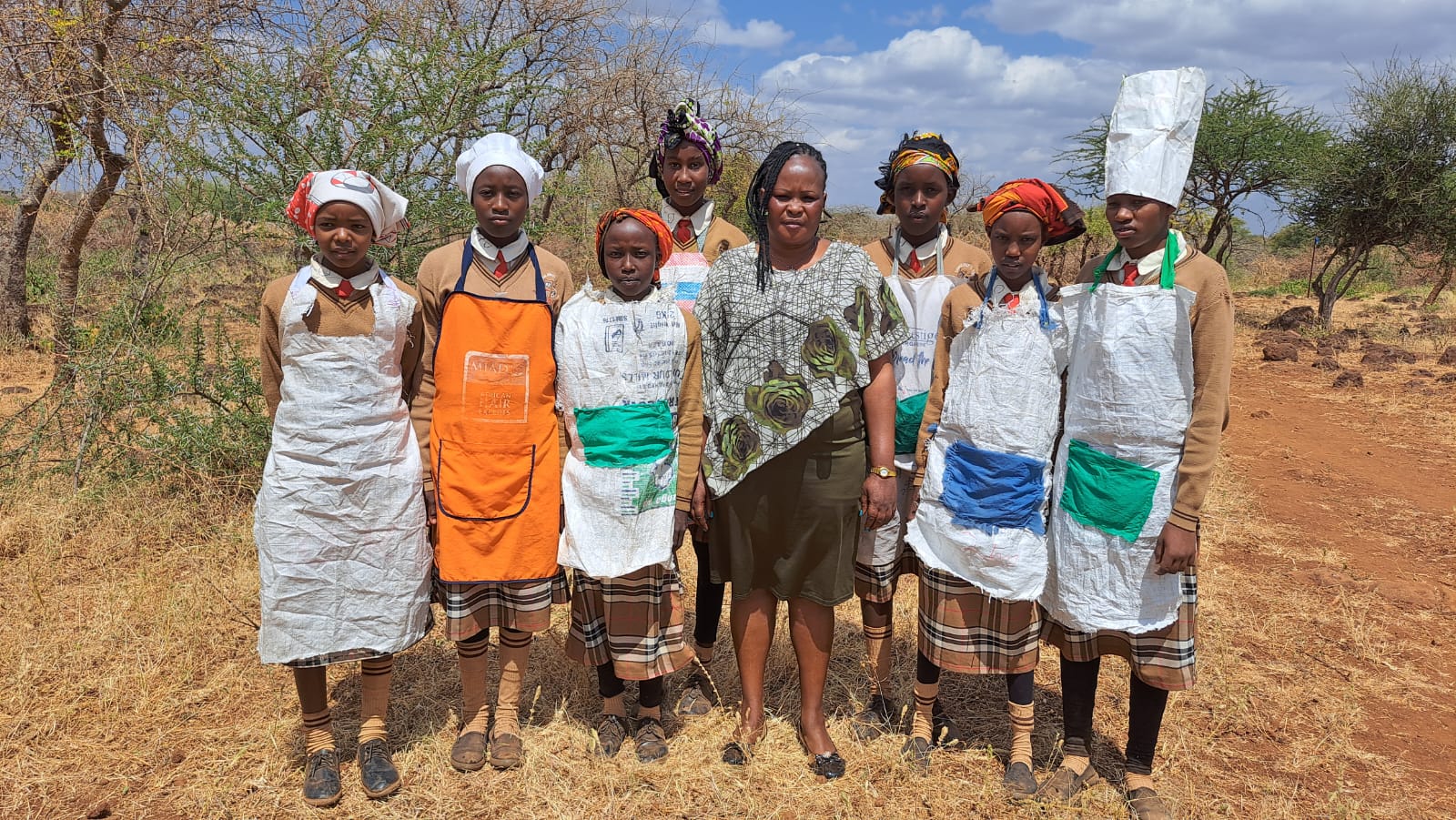On June 30, 2019, the time had come again. Manu and I set off for Zurich Airport to take the now familiar flight from Zurich to Nairobi. As usual, we traveled light: we only had about 120 kg of luggage spread over 4 suitcases.
In our luggage were lots of donated clothes, wool, crochet hooks, paints and blocks as well as lots of T-shirts with the logo for the four activities that we want to launch in the newly built Nasaru – Learning Center for Maasai Girls.
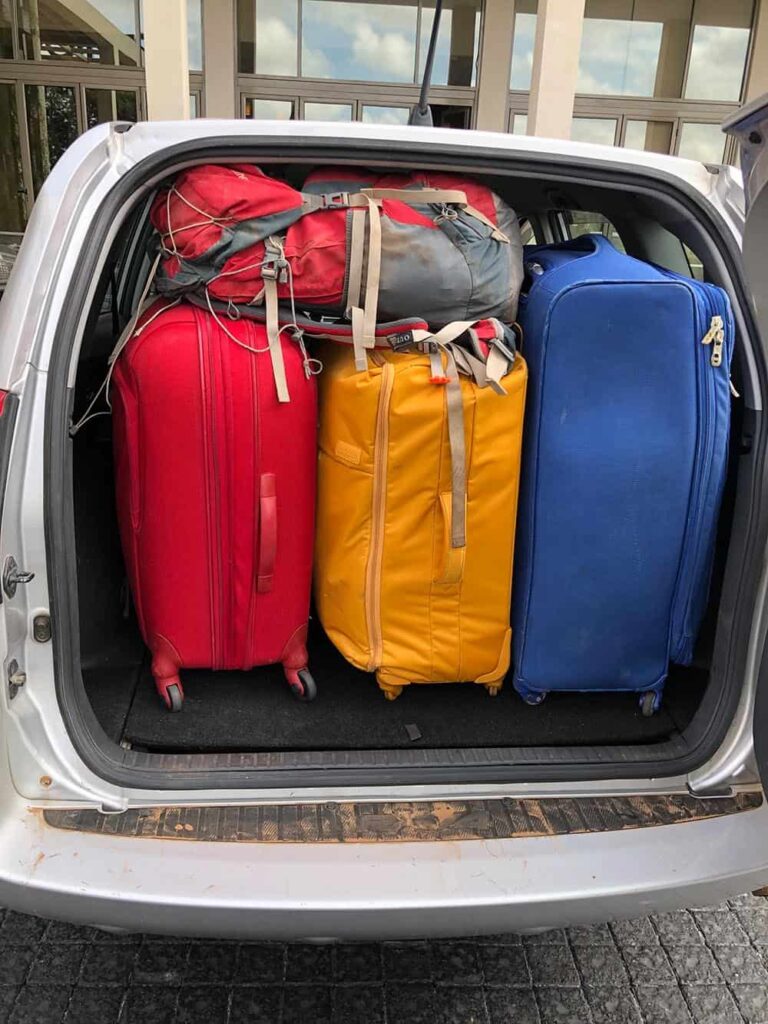
Lightweight luggage 
The four additional activities for Nasaru
We arrived in Nairobi in the evening and spent a quiet evening in a hotel at the airport. The next morning we set off: Giorgio picked us up and we drove towards Kitengela, where we had an appointment with Agnes Gitonga . I had met her via Facebook through Elizabeth Leuenberger – Kajs and was already incredibly excited about the meeting.
So we drove to Kitengela quite packed. Agnes Gitonga had only told me that she was in Noonkopir and that I should call as soon as we were close. As there was a connection at that moment, we let Google Maps guide us. We turned off the main road onto a dirt road and then the area became increasingly inhospitable. I called Agnes and with help from a passing motorist we were able to find where we were. Agnes directed us to the mosque. After that we only had to ask about five times until we got to the mosque, where we were already expected by Agnes. She then took us to her center, which actually consists of two parts: the Gibon Women Empowerment Centre, where women are trained as tailors and, above all, their self-esteem is strengthened, and a school for grades 1 to 3 and a dormitory for a total of 100 children. These children are exclusively children who come from very underprivileged families . This means that their parents cannot even afford the school fees required for public schools. The young children are misused by the parents as babysitters for the even younger children instead of sending them to school.
Before that, however, we stopped off at a large supermarket to buy a few things. We bought a large box of apples and oranges, 50 kg of rice, sugar, toilet paper and cookies for the children at Agnes Gitonga’s school. We also bought a thermos flask and a container to keep chapati warm for another Agnes, namely from Iloshon, who clearly told us last year that she really needed it. 😊. In the household department, we then came across two heavily armed men and Giorgio pointed out to us at that moment that churches and supermarkets are popular targets for attacks and this supermarket in particular, as it is Somali-owned. Incredibly reassured, we left this section as quickly as possible.
There is a very positive spirit of optimism in the very poor surroundings. You can literally feel how the power woman Agnes manages to get things moving in the minds of the women and children present. She is a great role model for all the women at the center and has managed to sow the seeds for a very important change with her irrepressible will and her talent for communication. We would like Agnes to come to Iloshon to convince the girls there of the need for change. We are of the opinion that it is much better if one of them does this and not a muzungu (white foreigner) who, in their eyes, has no idea about their lives anyway. We would also like to enter into a cooperation with a tailor trained by Agnes for the Nasaru Learning Center.
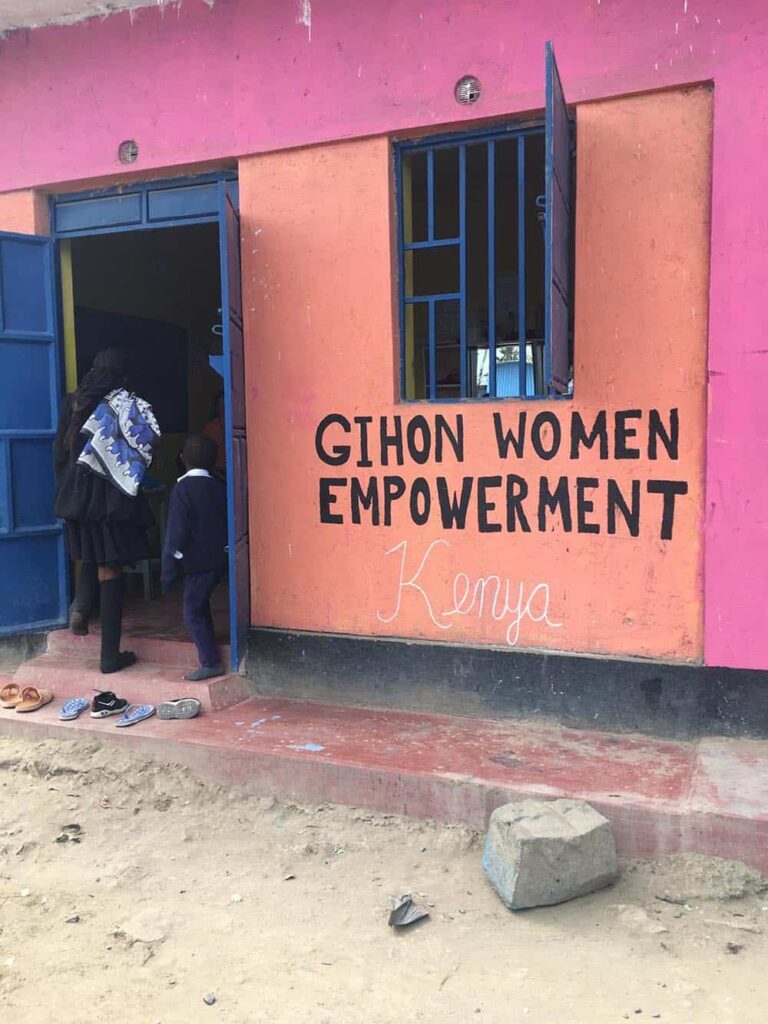
After an emotional farewell and the promise to come back, we made our way to the nearest bookshop to order the school books Agnes needed. The bookseller was very knowledgeable and promised to order the books for us.
The next stop was Olpirikata, where we were given a very vivid demonstration of one of the main problems: The community had already been expecting us and accordingly the first meeting was on the agenda. It began with a short prayer and then we were welcomed by the village elder. He not only gave us a warm welcome, but also made it very clear that there were a lot of problems within the community that we needed to solve. These problems included: The farm’s neighbor who sends her goats to the farm’s vegetable field, where they then eat the vegetables. A woman from the women’s cooperative who sells her jewelry outside the united village. The absence of a doctor after they had already sent the second one packing. I then explained to them in my welcoming speech that we are the midwives of projects and are happy to accompany them into adulthood. But then the local population would have to take responsibility for the projects and solve all the problems associated with them themselves.
We then set off to inspect all the projects and their progress. The result was somewhat sobering, but to be fair it has to be said that there are always initial difficulties everywhere and problems are there to be solved. The local project managers are therefore called upon to find solutions and we have promised that we are always available for input and suggestions for solutions, although we cannot solve the problems from afar. We then gave the project managers clear, quantitative targets and asked them to provide regular feedback on progress.
In this context, I also had a very informative and interesting conversation with three young Maasai men. I asked them about their ideas for the future. One wanted to become the boss of a large company and the other two saw themselves as future store owners, although only one of them had a rough idea of what he actually wanted to do with the store, namely trade in spare parts. The other had no idea what he actually wanted to do with a store. A lot still needs to happen here, first and foremost in people’s minds!
In the evening, Rosaria, a young Italian volunteer, joined our small group. Rosaria will spend the next few weeks visiting the various Maasai communities with Giorgio to treat the fungal infestation on the heads of many of the children, which can apparently be combated relatively easily with soap. In addition, they will also rinse the children’s eyes with a saline solution, ideally to prevent the development of eye infections caused by the fine dust or at least to alleviate the symptoms somewhat.
The next day we set off in the direction of Iloshon. The atmosphere there was overwhelming and we were welcomed with a lot of pomp and circumstance. You could really feel the excitement and the departure.
We then had intensive discussions with all the teachers and especially with Purity, the deputy head teacher, who is also responsible for organizing the Nasaru Learning Centre. We were delighted to discover that the 16 girls registered the previous week had already turned into 82, meaning that the learning center was more than full, as we had originally expected 72 girls and 72 beds had also been made. We briefly discussed the next steps and then went to all the classes to briefly introduce ourselves and explain the rest of the program. As the girls now have a lot more time to study as they no longer have to travel long distances to school, we also launched a new challenge for the whole school. In the ranking of schools in the district (12 schools in total), Iloshon School was in 3rd place in 2018. As we expect the girls’ performance to improve and, ideally, the boys to be motivated by the girls challenging them, the aim is for Iloshon to become number one next year. We then presented this challenge to the parents and all the teachers and promised a big party with rice, beans, bananas, meat and green cake (the children’s wish – we don’t know exactly what kind of cake though… but we’ll find out for sure if we need to! While we noticed a numerical balance between girls and boys in the lower classes, it became very clear why Nasaru was needed, especially when we visited the 8th grade: There are 10 boys and only 5 girls left in this class!
We then visited Nasaru and took a close look at everything. We were very surprised when we saw how much attention to detail and with what incredible simplicity and maximum functionality Giorgio had implemented this project. A big thank you and bravo to Giorgio from La Nostra Africa! All four dormitories have an adjoining bathroom with four washbasins and four combined WCs/showers. There are currently two large water tanks in front of the center. However, we will soon start building a borehole, provided that the geological survey also shows a very high probability of water being available. In conversation with Purity, another problem immediately emerged: In the girls’ perception, these toilets do not offer sufficient privacy and privacy, whereupon we immediately put this point on the agenda for the afternoon.
In the afternoon, we started with team building. We visited the girls in each of the four dormitories. A dorm leader was then chosen for each dorm and the girls were asked to find a name for their new home. The dormitories were all named after Kenyan mountains: Mount Kenya, Mount Atlas, Mount Elgon and Mount Kilimanjaro. The girls were then asked to create a drawing of “their” mountain as a group. The topic of toilets then came up and the girls were informed about the planned extracurricular activities. Purity provided a perfect translation, as we also encountered cultural differences here: The activity for increased self-confidence, which includes sexual education, personal hygiene and boosting self-esteem, is represented on the T-shirt by a girl wearing a “Superwoman” shirt. Of course, the Maasai girls had never heard of Superwoman! In any case, they all happily put on their T-shirts and grouped together for a group photo.
The girls’ day starts at 05.00 a.m. and the Maasai in charge of the dormitories reads to them from the Bible. The Maasai language, Maa, is a language threatened with extinction as there are very few books translated into Maa and new inventions and terms are taken directly from English or Kiswahili and not translated into Maa. One of the few books available in Maa is the Bible! Afterwards, they have to clean the dormitory and bathrooms before having breakfast in the form of a porridge. School starts at 07:30 and ends at 15:30. Then the girls have a break until they have to queue for water to wash their clothes. After dinner, they return to their classrooms to study and then go to bed at around 09:30.
We spent the next morning in the English lessons of the various classes and what we had already feared came true. There is something missing everywhere: Since not all students have textbooks, the teacher writes the explanations on the blackboard, which are then copied out by the students. In addition, we repeatedly observed pupils desperately shaking their pens until we realized that there was simply no more ink in them. Pencils are also in short supply and the children’s school uniforms and shoes have already survived several generations of schoolchildren. English lessons are therefore very slow and certainly not based on the latest pedagogical findings. Active language use and terminology in particular are somewhat neglected. The teachers are also still equipped with a cane, which they also like to use….
After this excursion into the everyday reality of a Maasai student, we set off for a meeting with the parents. However, as the parents needed their children to herd cattle and they were still at school, the number of parents present was limited. So the meeting didn’t last very long for us, as the parents wanted to discuss internal school agendas without us afterwards. In any case, there was a very positive and benevolent atmosphere among the parents and a willingness to change things. They definitely expressed their enormous gratitude.
Agnes from Iloshon also showed us her gratitude for the thermos flask and the warming box for her chapati by surprising us with sweet chai tea and fresh chapati.
We then spent the rest of the afternoon in various workshops with the girls. We showed them the tailoring and crochet workshops and their enthusiasm and motivation were enormous. They were also very enthusiastic about reading together. It was a very intense and positive afternoon. Towards the end, the parents, who had all gathered by then, came together to thank Nasaru in their own way. The women danced and sang and we were presented with two Maasai cloaks with the “WeCare” logo.
Time to say goodbye: Early the next morning, we headed back to Kitengela with a stopover in Kajiado, where we procured pens, pencils, sharpeners and erasers for the 350 pupils at Iloshon school and also completed the furnishing of the bathrooms at Nasaru with mirrors and waste bins. The capable bookseller in Kitengela had actually managed to procure all the books approved by the government. The joy among Agnes’ children and Agnes herself was immense. The children danced and sang and were very excited. We will certainly stay in touch with Agnes!

At the end of our short visit to the Kenyan savannah, we visited Nairobi National Park, which is a comfortable 40-minute drive (depending on traffic) from Nairobi International Airport. Exhausted but satisfied, we boarded our return flight full of new impressions, insights and encounters with the certainty that we would be back!


